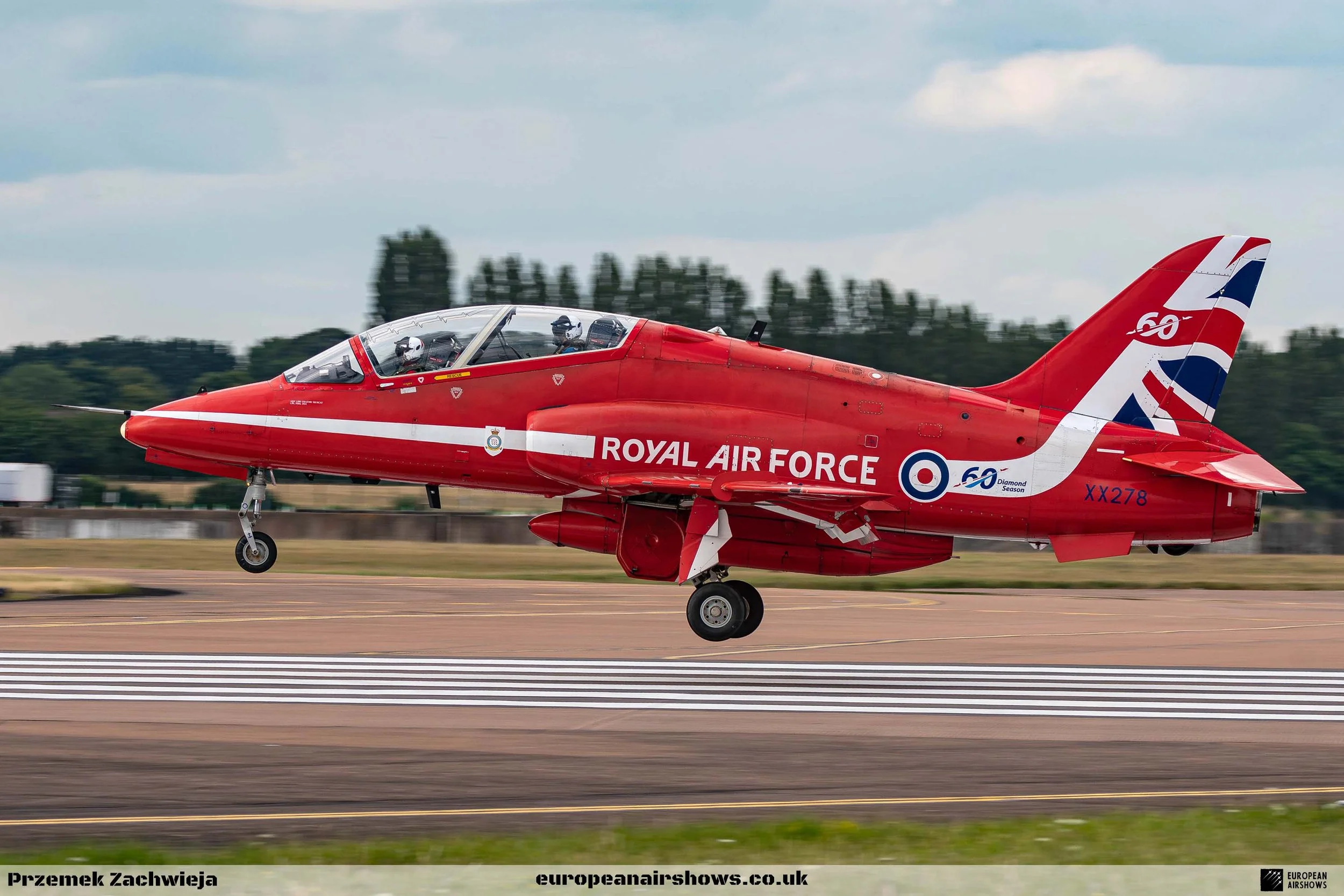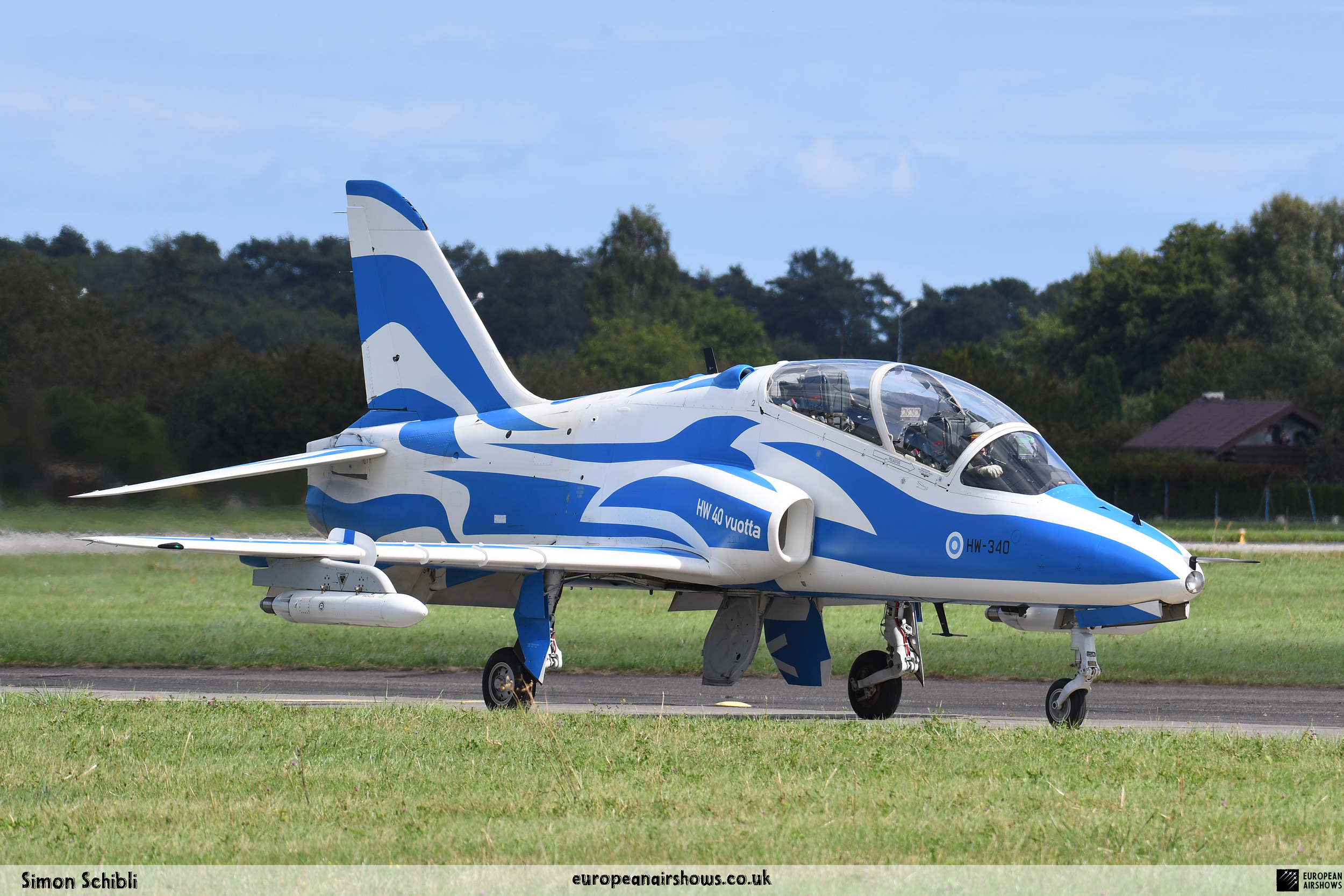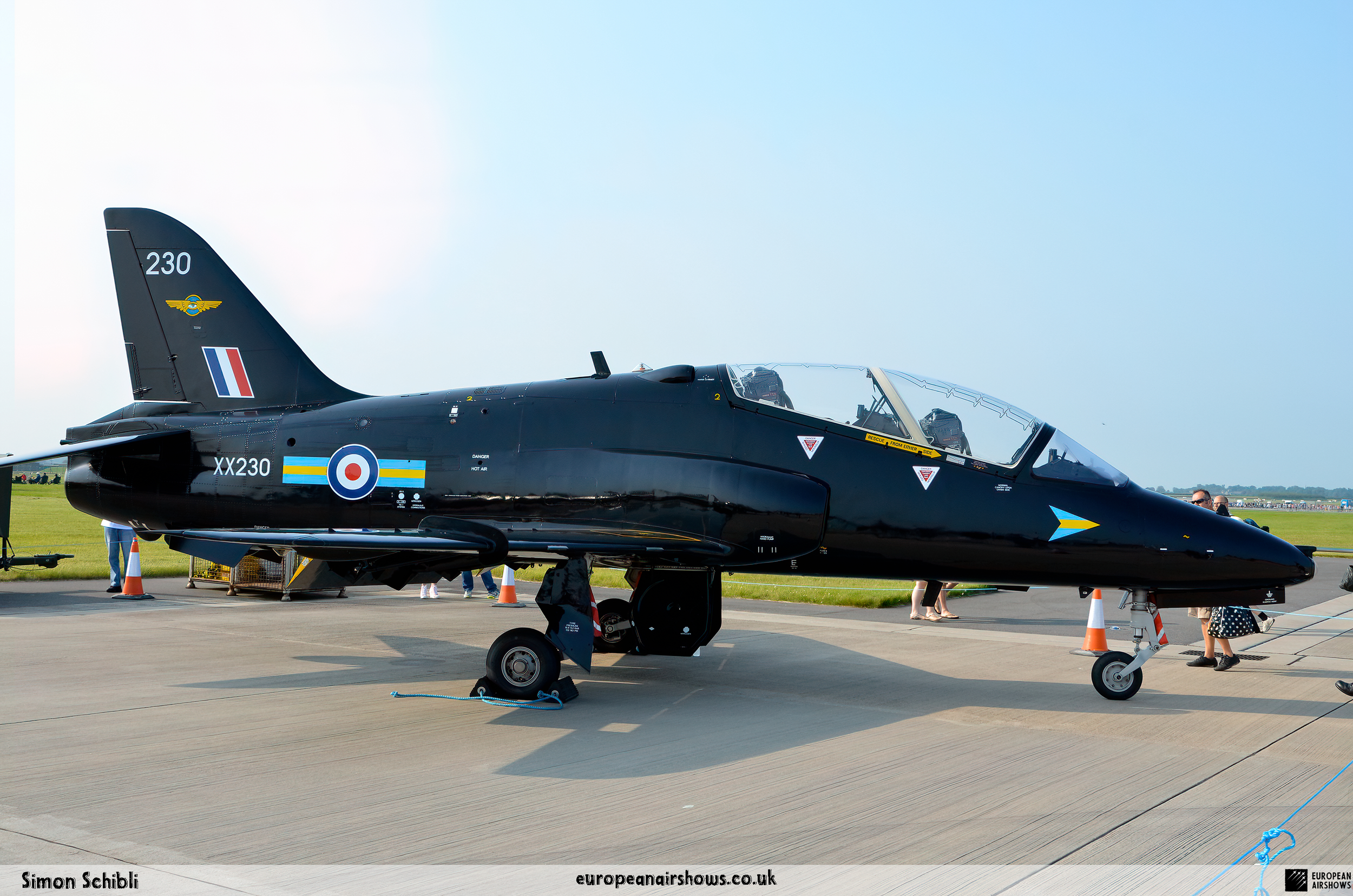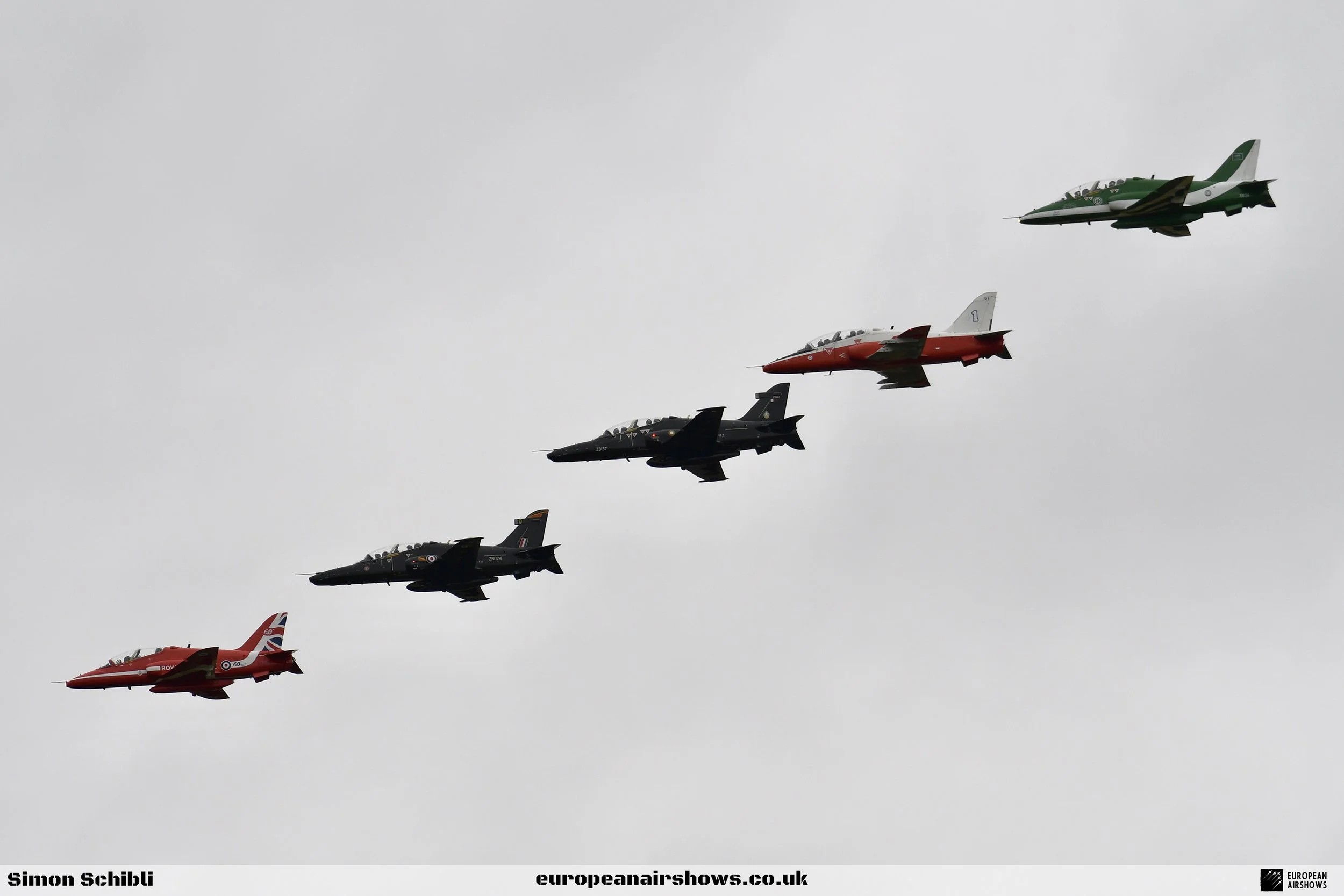
August 21 / BAE Systems Hawk first flight
First Flight 21 August 1974
BAE Systems Hawk
The BAE Systems Hawk is an advanced trainer aircraft that originated in Britain. It was initially known as the Hawker Siddeley Hawk and was produced by British Aerospace and BAE Systems. The aircraft has been used primarily as a training plane and as a low-cost combat aircraft all over the world.
The Hawk has been a popular aircraft among military operators worldwide, with the Royal Air Force and several foreign military operators employing the aircraft. The Royal Air Force's Red Arrows display team has used the Hawk, and over a thousand Hawks have been sold to 18 operators worldwide. Notably, Hindustan Aeronautics Limited (HAL) produced the aircraft under license in India.
In 1964, the Royal Air Force specified a requirement for a new fast jet trainer to replace the Folland Gnat. The SEPECAT Jaguar was initially intended for this role, but it was deemed too complex for fast jet training. Hawker Siddeley Aviation (HSA) began designing a simpler aircraft in 1968, initially as a special project (SP) 117, with Ralph Hooper leading the design team.
The design was conceived of as having tandem seating and a combat capability in addition to training, as it was felt that this would improve export sales potential. Early in 1970, the RAF issued Air Staff Target (AST) 397, which formalized the requirement for new trainers of this type. The RAF selected the HS.1182 for their requirement on 1 October 1971, and the principal contract for 175 aircraft was signed in March 1972.
The prototype aircraft, with plate number 1, first flew on 21 August 1974 from Dunsfold, piloted by Duncan Simpson, Chief Test Pilot of HSA (Kingston). It reached 20,000 ft in a flight lasting 53 minutes. All development aircraft were built on production jigs, and the program remained on time and within budget throughout.
The Hawk T1 entered RAF service in late 1976, and the first export, the Hawk 50, flew on 17 May 1976. This variant had been designed specifically for the dual role of lightweight fighter and advanced trainer and had a greater weapons capacity than the T.1.
Several variants of the Hawk followed, with common improvements to the base design typically including increased range, more powerful engines, redesigned wing and undercarriage, the addition of radar and forward-looking infrared, GPS navigation, and night-vision compatibility. Later models were manufactured with a great variety of avionics fittings and system compatibility to suit the individual customer nation. Cockpit functionality was often rearranged and programmed to be common to an operator's main fighter fleet to increase the Hawk's training value.
In 1981, the United States Navy selected a derivative of the Hawk as their new trainer aircraft. Designated the McDonnell Douglas T-45 Goshawk, the design was adapted to naval service and strengthened to withstand operating directly from the decks of carriers, in addition to typical land-based duties. This T-45 entered service in 1994, and the initial aircraft had analogue cockpits, while later deliveries featured a digital glass cockpit. All airframes were planned to undergo avionics upgrades to a common standard.
Overall, the Hawk has been a successful aircraft, serving as a trainer for several air forces and a low-cost combat aircraft for others. It has been used in conflicts worldwide, including the Falklands War, the Gulf War, and the Iraq War. The aircraft has also been used in various air forces' aerobatic display teams, including the Royal Air Force's Red Arrows, the Royal Saudi Air Force's Saudi Hawks, and the Indian Air Force's Surya Kiran.
Hawk Facts
Origins in the 1970s: The BAE Systems Hawk was first introduced in the early 1970s, with its maiden flight occurring on August 21, 1974. It was designed as a jet trainer to provide advanced training for pilots before they transitioned to front-line fighters.
Versatile Roles: While primarily a trainer, the Hawk has been adapted for various roles, including light attack and reconnaissance. It has been used in combat operations by several air forces around the world.
Global Reach: The Hawk has been exported to over 18 countries and has been used by numerous air forces, including those of the UK, India, South Africa, and Australia. Its versatility and performance have made it a popular choice for military training.
Advanced Avionics: Modern variants of the Hawk, such as the Hawk T2, are equipped with advanced avionics, including digital displays, a glass cockpit, and integrated training systems that simulate the experience of flying more advanced fighter aircraft.
Aerobatic Teams: Several different Air Forces around the world use different versions of hawks for their national aerobatic teams. Some aerobatic teams using the Hawk for their displays include the Royal Air Force Red Arrows, Finnish Air Force Midnight Hawks, Royal Saudi Air Force Saudi Hawks and the Indian Air Force Surya Kiran.Air Force.
Engine Options: The Hawk has been powered by several different engines over its production run. The original models used the Rolls-Royce Adour engine, while later variants have been equipped with more powerful engines to enhance performance.
Use in Combat: The Hawk has seen combat in various conflicts, including the Gulf War, where it was used by the Royal Saudi Air Force. Some variants have been armed with weapons for light attack roles, demonstrating their versatility beyond training.
Training Systems: The Hawk incorporates integrated training systems that allow for real-time data sharing between aircraft and ground control, enhancing the training experience and providing valuable feedback to student pilots.
Long Production Run: The Hawk has been in continuous production since its introduction, with various upgrades and modifications made over the years. Its longevity is a testament to its design and adaptability to changing military needs.
Future Developments: BAE Systems continues to develop the Hawk platform, with ongoing upgrades to avionics, weapons systems, and training capabilities to ensure it remains relevant in modern military training environments.


















